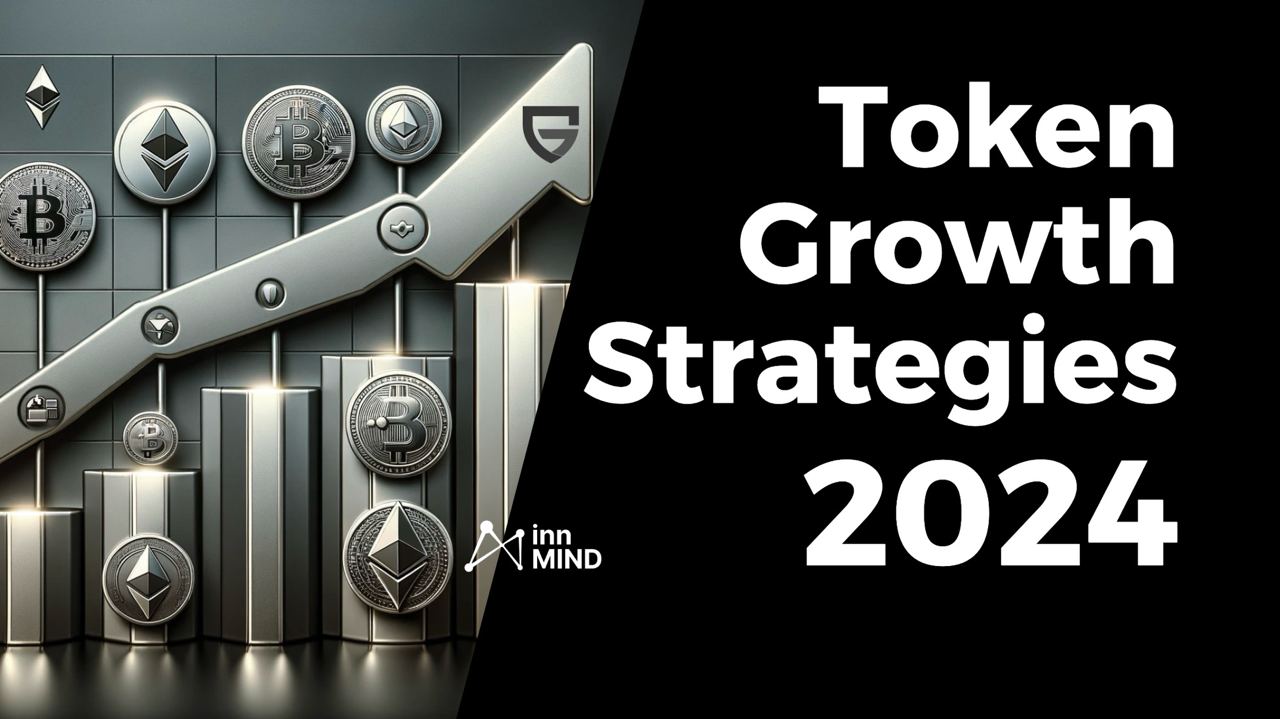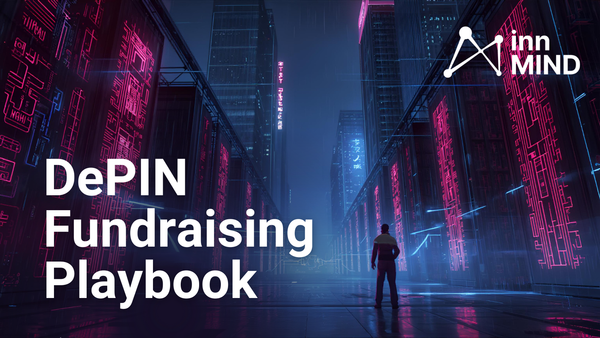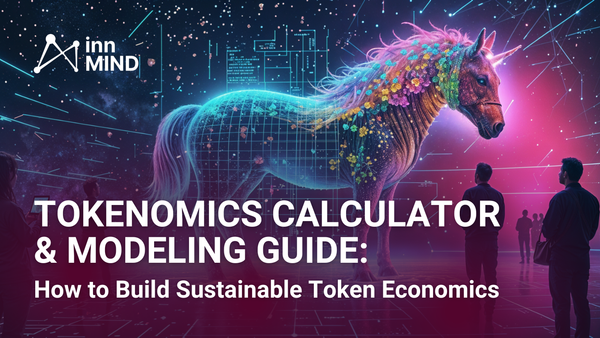Supply-Side Tokenomics: Supply, Distribution, Optimization for Price Performance & Cost-Efficiency
This guide explains supply-side tokenomics for Web3 founders: how to design TGE unlocks, vesting, FDV vs MC ratios, capped vs uncapped supply and emission models that support long-term price performance instead of killing your token after launch.

Author & Contributor: Max K - CEO Coinstruct.tech
What are the right choices for vesting terms & cliffs, token distribution and token pricing? What FDV (Fully Diluted Valuation) to target and how to overcome excessive inflation, but to fairly reward users and guarantee a solid ROI for investors?
Many founders feel exhausted when they approach these multi-sided yet largely important issues. This article discusses most of the supply-side tokenomics points and it aims to provide web3 builders with proven & practical knowledge on how to work with supply management and emission models.
There are many factors that influence the price performance and long-term success of a token. These factors include incentive mechanisms, use cases, utility, value capture, value accrual, supply sinks, random events, narrative, etc. However, supply-side tokenomics is a fundamental part of a proper token modelling of every successful web3 project.
TL;DR — Supply-Side Tokenomics in One Paragraph
Most tokens fail not because of “bad marketing”, but because their supply-side tokenomics is broken. If initial float is too low and FDV is too high, or if vesting, emissions and sinks are not aligned with real demand, price quickly collapses after TGE. This article explains how to think about TGE unlocks, MC vs FDV ratio, capped vs uncapped supply and tail emissions, so you can design a supply model that supports long-term price performance instead of destroying it.
From token issuance mechanisms to distribution strategies, from inflationary models to deflationary mechanisms, on-going issuance and tail emissions - each aspect of supply-side tokenomics presents unique challenges and opportunities to the token. By critically managing supply, token distribution, sinks & sources and actively proposing innovative solutions like milestone-vesting or price-action triggered burning, we can pave the way for the emergence of resilient token ecosystems capable of supporting organic growth, liquidity, and long-term value creation.
Before you lock any supply schedule, model a few scenarios:
With Tokenomics Calculator PRO you can plug in different caps, emissions curves and allocations and see their impact on FDV, circulating MC and unlock schedule in minutes.
👉 Try advanced tokenomics spreadsheet
Choosing Your Supply Model: Capped vs Uncapped Token Supply
The first aspect to consider is an initial unlock on Token Generation Event (TGE).
Driven by a concern regarding inflation, builders in the web3 space frequently focus solely on the dangers associated with an excess of token supply in circulation. However, founders should also consider the converse scenario: the potential drawbacks of having insufficient supply available at the start.
That’s because when a token first launches it generally has:
➡️ The highest trading volume
➡️ High levels of irrational hype
➡️ The lowest circulating supply the token will ever have
The combination of these factors can result in a large amount of FOMO buying, creating an unsustainable pump in price that immediately crashes once token emissions kick in - since that level of concentrated buying demand per unit of available supply simply can not be maintained as hype decreases and/or supply increases.
Instead of aiming to limit the supply only for the sake of keeping it low, the focus should be on aligning user demand with the liquid supply available.
Indeed, the initial distribution of tokens during a TGE is a critical point that significantly influences token's supply-side dynamics. When at TGE less than 5% of the total token supply is released into circulation, it often sets the stage for potential massive inflationary pressures post-TGE.
By keeping a significant portion of tokens locked or reserved at the outset, projects effectively limit the available supply in the market and target for higher FDV. However, this strategy can inadvertently lead to supply-demand imbalances, particularly if demand fails to match the restricted supply. As a result, once these locked tokens begin to unlock and enter circulation, the sudden influx of supply can exert downward pressure on the token's price, potentially leading to inflationary trends.
Moreover, the implication that demand must increase by more than 1900% just to maintain price stability highlights the magnitude of the challenge facing such projects. This scenario shows the importance of aligning tokenomics with market dynamics and community engagement to ensure sustainable growth and value creation.
Let’s take an example of a Worldcoin ($WLD)
If we take a look at Worldcoin’s vesting schedule we can notice that with a maximum supply of 10 billion tokens, a percentage which is unlocked at TGE is just 1,14%.
Resource: Token Unlocks - $WLD Vesting Schedule
This indicates that the supply of $WLD will increase by 60x within 3 years. Such rapid inflationary growth, averaging a 40% increase week over week, creates an immensely daunting task of maintaining price stability amidst an expanding token supply. For Worldcoin, sustaining price stability would necessitate a continuous influx of new buyers, injecting millions of dollars into the ecosystem week after week. This demand must not only offset the increasing supply but also account for market dynamics, investor sentiment, and competitive pressures.
Coinstruct has helped 25+ projects to optimize their supply-side tokenomics and the key benchmark for us is to have a reasonable 15-20% MC vs FDV ratio. Coinstruct also highly recommend considering various flexible vetsing models like milestone based vesting or AVV (Adoption Adjusted Vesting).
Supply Model Choice: Capped or Uncapped
The choice between a capped or maximum Supply or Uncapped token supply with on-going emissions is a crucial decision that Web3 founders must grapple with, as it profoundly shapes the token's economic dynamics and long-term viability.
When creating Bitcoin, Satoshi Nakamoto ensured there would only be a maximum supply of 21 million. Once 21 million Bitcoin are mined, no new BTC can be created. This limited supply has helped the narrative that Bitcoin is a true store of value compared with fiat currencies that increase supply due to central bank monetary policies.
In contrast, Ethereum had an inflationary supply at its inception. Ether supply was increasing at an annual rate of 4.5%. However, after the Ethereum Merge that saw it move from proof-of-work to proof-of-stake, it is now a non-inflationary asset due to its burn rate.
The most popular assumption that a token with a maximum supply (Bitcoin-like tokenomics) is inherently superior to one with an uncapped supply - can be considered a mistake or at least a misconception.
Supply Model is a core of a token’s future growth - it has to be defined based on the project’s nature and incentives structure. While capped supply tokens may initially appeal to investors due to their potential for deflationary pressure and scarcity, the reality is way more nuanced. There is no point in that there will be less tokens in circulation when there is no active demand for them.
Over time, capped supply tokens tend to become deflationary as the issuance of new tokens ceases, and existing tokens are burned or lost. This deflationary trajectory can lead to price appreciation and speculative dynamics but may also deter token usage in everyday transactions. We will discuss that in the following section in this article.
Conversely, tokens with an unlimited supply do not stick to a deterministic deflationary or inflationary trajectory. Ethereum (ETH), for instance, lacks a capped supply and experiences fluctuations between inflation and deflation over time. This flexible supply model enables Ethereum to adapt to changing market conditions and accommodate network growth without facing artificial scarcity constraints.
In reality, the choice between capped and uncapped supply must be evaluated within the broader context of the project's objectives, market dynamics, and community preferences. While capped supply tokens may offer perceived scarcity and deflationary pressure, uncapped supply tokens provide flexibility, adaptability, and scalability.
Moreover, proponents of uncapped supply argue that tokenomics should prioritize utility, adoption, and network effects over artificial scarcity. By embracing a dynamic supply model, projects can achieve sustainable growth, liquidity, and inclusivity within their ecosystems.
If you’re ready and just want an advanced plug-and-play spreadsheet, grab the PRO model of tokenomics calculator 2025
So, the key takeaways here are:
1. Deflation caused by Capped Supply can lead to decreased consumer spending, limited user's rewarding meaning less incentives to execute value-added actions, and economic stagnation, posing risks to long-term sustainability.
2. Ethereum and Monero, two prominent blockchain platforms often considered competitors to Bitcoin, demonstrate alternative approaches to token supply. Ethereum has never had a maximum supply, allowing for flexibility and scalability, while Monero implements tail emissions to incentivize ongoing mining and ensure network security. Many more projects like decentralized music streaming protocol Audius or TheGraph also work fine with on-going emissions.
3. Projects that have some kind of a necessity to reward on-going participation for many years throughout the existence - may opt for an uncapped supply with intensive emissions management. For instance, any type of tokenized asset (ex. carbon credits), pegged asset, wrapped asset, or user-minted asset against collateral (including stablecoins) effectively requires an uncapped supply.
4. Tail Emissions and Inflation: A constant rate of annual inflation, such as tail emissions, may not necessarily be inflationary in the traditional sense. Tail emission models, as argued by Bitcoin core developers, can contribute to network security and sustainability without fueling hyperinflationary pressures.
Builders should evaluate both uncapped and capped supply approaches and select the better fit for their use case.
Supply-Side Tokenomics FAQ
What is supply-side tokenomics?
Supply-side tokenomics focuses on how a token’s supply is created, distributed and unlocked over time. It includes vesting schedules, cliffs, initial TGE unlocks, ongoing emissions, buybacks and burning, as well as the split between team, investors, ecosystem and community allocations.
Why is a low float and high FDV so dangerous?
A very low initial circulating supply combined with a high fully diluted valuation (FDV) often creates an artificial pump at TGE. Once large cliffs and vesting unlocks start, circulating supply grows much faster than organic demand, which puts constant sell pressure on the price and makes it almost impossible to sustain the initial valuation.
How much supply should be unlocked at TGE?
There is no single magic number, but in most cases <5% circulating supply at TGE is too aggressive and leads to massive inflation later. A healthier approach is to align liquid supply with realistic demand, community size and liquidity, so that price is supported by real usage and trading volume, not just launch hype.
Should my token have a capped or uncapped supply?
A capped supply is not automatically “better”. Capped tokens tend to become deflationary over time, which is good for narrative but can reduce spending and real usage. Uncapped supply with well-managed emissions (like Ethereum or Monero) can better support long-term network growth, continuous rewards and security, as long as inflation is predictable and transparent.
What are tail emissions and why do they matter?
Tail emissions are a small, constant ongoing issuance that never goes fully to zero. They can be used to keep miners or validators incentivised, secure the network and support participation without creating runaway inflation, as long as the percentage of new supply stays modest compared to total market cap and real demand.
More on total supply and price per token will be in the next article from Coinstruct. Subscribe to InnMind weekly newsletter not to miss unique stuff to develop your project.
Coinstruct, official tokenomics partner of InnMind, is a specialized agency for full-cycle Web3 tokenomics development where it has a team of diverse specialists from mathematicians, product managers to degens from leading DAOs working together to create advanced token models, reward systems, economy audits and scoring. Coinstruct focus is to create Web3-native sustainable economic solutions to help projects achieve desired goals through tokens: from efficient fundraising to increasing user base, retention and loyalty.
If you have a web3 project that is planning to launch a token and struggling with developing sustainable Tokenomics - feel free to fill out a form and arrange a free strategic call with the Coinstruct team. Or you can join new Telegram channel where Coinstruct share tokenomics insights and experience.
Read also:








